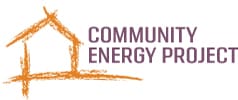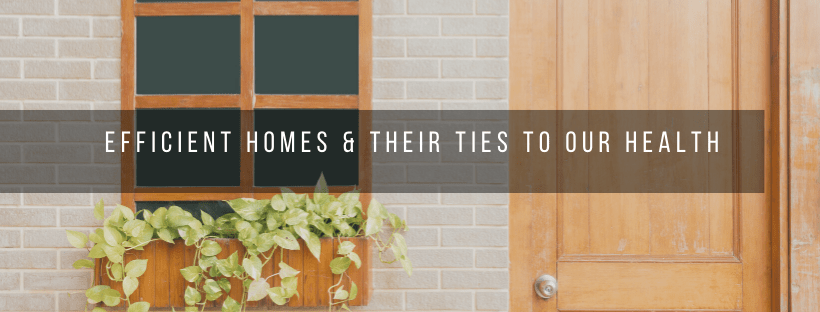Importance of Efficient Homes and Their Ties to Our Health
Community Energy Project offers Home Energy Scores as a FFS program and for free for income qualified households. We started conducting HES’s at the beginning of the program in 2018. Over time, we noticed the value of knowing a home’s energy efficiency and started partnering with other organizations to provide Home Energy Scores for our current clients at no cost. We offer free scores to current clients for several reasons. It is a great tool to educate them on their current home attributes and efficiencies and on what their home could be like with upgrades, it’s a tool for CEP to help prioritize work and identify clients as new programs come through for targeted outreach, we also use it across the housing sector to better advocate for our clients and energy efficiency programs.
We cater to homeowners and renters alike, most of our clients are at or below 80% median family income. These are folks that often have to choose between paying bills and food or making repairs to their home. Our programs provide the support they need for home resiliency, health, and safety.
Typically when talking about energy efficiency upgrades, the conversation is focused around cost savings and carbon reduction. Health benefits are often seen as secondary or as an indirect impact of efficiency upgrades. This needs to change. Health and safety benefits of EE are just as important (if not more important to some demographics) as cost savings and carbon reduction. Housing is healthcare, even though it’s often taken for granted. The intersection between low income households and pre-existing medical conditions is nothing new. This also means that improvements in occupant health are strongest among those vulnerable groups.
Unhealthy buildings can cause a myriad of issues for occupants. The most common being respiratory issues due to poor or no ventilation, dampness, and dramatic swings in indoor temperature. Unhealthy building pose an even higher risk for children, growing up in an unhealthy home can cause a lifetime of medical struggles. Cardiovascular issues often arise from unhealthy buildings due to indoor pollutants, radon, or cold temperatures. Even mental health can decline in occupants in unhealthy buildings.
These key EE improvements can have huge impacts on occupant health. Insulation and air sealing are some of the most important areas of improvement that can have a dramatic reduction in energy costs as well as health benefits. In doing Home Energy Scores we rarely see insulation or air sealing. This is a huge problem in the Portland Metro area, especially because majority of our housing stock was built before energy code and most of these homes have not had energy retrofits done. HVAC upgrades, including duct sealing, are another area of improvement that we don’t often see while out in the field. However, these upgrades in running test HES scenarios on homes can increase a home’s score by up to 2 points even if it’s the only measure that’s changed. Ventilation is perhaps one of the most important EE upgrades that can be done in a home, especially older homes with no existing ventilation or old systems that are in need of replacement.
A white paper published by E4 The Future evaluating EE programs and health impacts of weatherization work in low income housing show a 12% decline in asthma-related emergency service use, 9% decrease in persistent colds, 13% less eczema and allergies, and greater than $400 decline in annual Medicaid costs and fewer Medicare claims.
Nearly 60% of the no cost HES’s we have conducted received a below average score of 4 or below. Majority of our clients are seniors or folks with underlying medical issues that could benefit the most from EE programs. From surveys conducted from our clients that received basic weatherization and critical repair work, 40% said their heath improved after the work was completed. Keep in mind these are just small measures like spot air sealing, weather stripping around doors, or plastic window kits. Imagine the increased benefits if a whole home retrofit was done! In addition to basic weatherization, we also conduct small home repairs that have a huge impact on the livability and home resiliency for our clients. 85% of households surveyed said that their believe that they will remain in their home for the foreseeable future has improved, as well as 62% saying their ability to afford living in their home has improved.
We need more programs dedicated to residential EE for low and moderate income households. As a small non-profit our work is often limited by budget constraints. 57% of clients surveyed in our annual review stated they could use help with larger repairs such as furnace replacements, air ventilation improvements, new water heaters, and insulation. These energy upgrades, in addition to home safety repairs, can greatly reduce energy burdens and home retention for vulnerable communities, a need that is growing more and more as families are out of work and staying home due to COVID.
At CEP this year has really shown us the importance of our mission: that everyone deserves a safe, healthy, and efficient home, regardless of income.


Comments.
Heather Moline
Looking forward to working with CEP on addressing EE cost-effectiveness rules and exceptions at the PUC! Here’s a great article about what’s possible in Oregon: https://www.nrdc.org/experts/mohit-chhabra/heres-how-bring-out-best-energy-efficiency